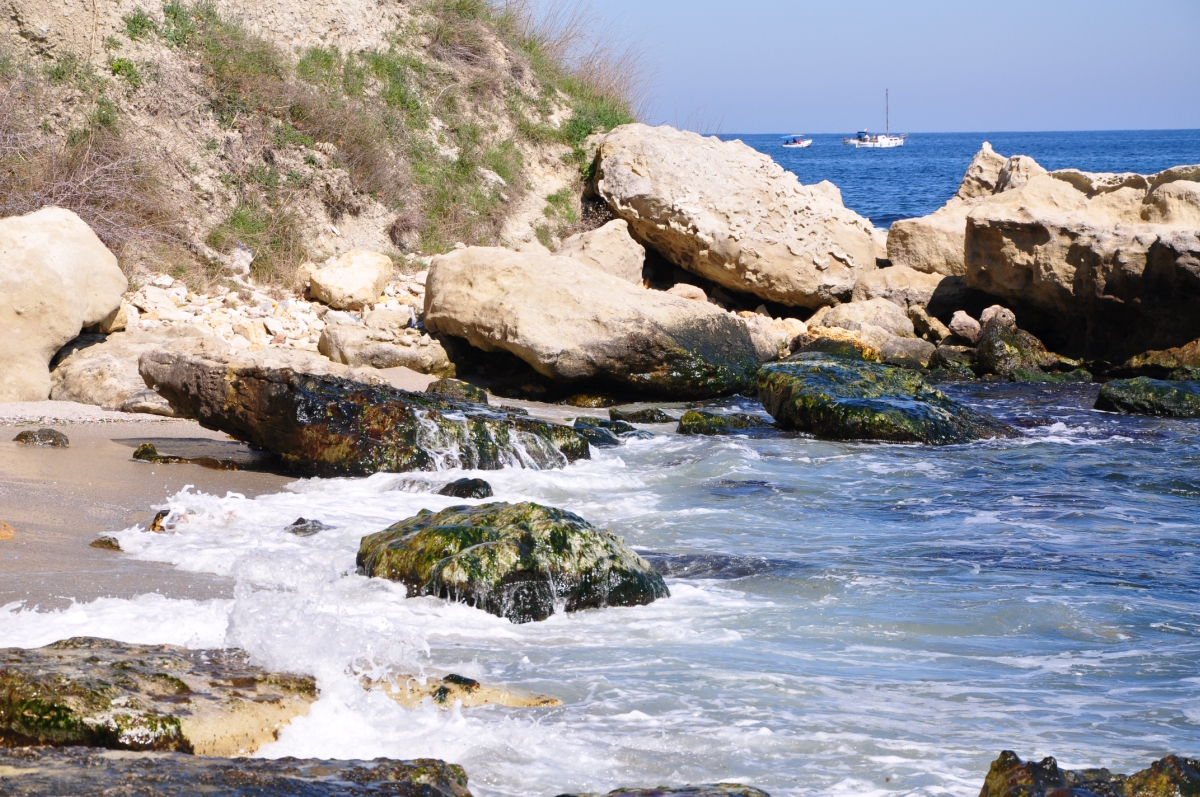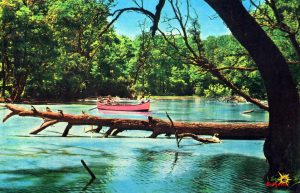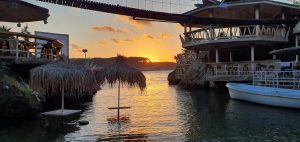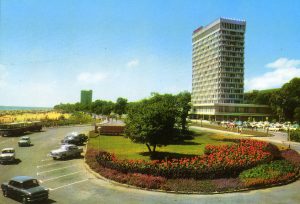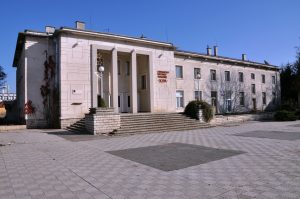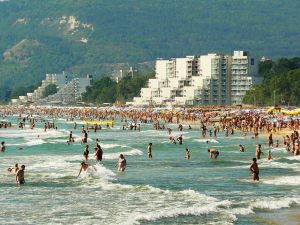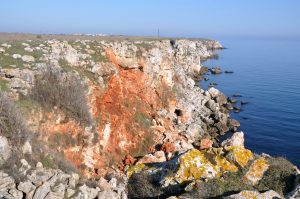The Black Sea is a body of water and marginal sea of the Atlantic Ocean between Eastern Europe, the Caucasus, and Western Asia. It is supplied by a number of major rivers, including the Danube, Dnieper, Southern Bug, Dniester, Don, and the Rioni. The watersheds of many countries drain into the Black Sea beyond the six that immediately border it.
The Black Sea has an area of 436,400 km2 (168,500 sq mi) (not including the Sea of Azov), a maximum depth of 2,212 m (7,257 ft),and a volume of 547,000 km3 (131,000 cu mi).[5] It is constrained by the Pontic Mountains to the south, Caucasus Mountains to the east, Crimean Mountains to the north, Strandzha to the southwest, Balkan Mountains to the west, Dobrogea Plateau to the northwest, and features a wide shelf to the northwest.
The longest east–west extent is about 1,175 km (730 mi). Important cities along the coast include Odessa, Sevastopol, Samsun, and Istanbul.
The Black Sea is bordered by Ukraine, Romania, Bulgaria, Turkey, Georgia, and Russia. It has a positive water balance with an annual net outflow of 300 km3 (72 cu mi) per year through the Bosporus and the Dardanelles into the Aegean Sea.[citation needed] While the net flow of water through the Bosporus and Dardanelles (known collectively as the Turkish Straits) is out of the Black Sea, generally water is flowing in both directions simultaneously. Denser, more saline water from the Aegean flows into the Black Sea underneath the less dense, fresher outflowing water from the Black Sea. This creates a significant and permanent layer of deep water which does not drain or mix and is therefore anoxic. This anoxic layer is responsible for the preservation of ancient shipwrecks which have been found in the Black Sea.
The Black Sea ultimately drains into the Mediterranean Sea, via the Turkish Straits and the Aegean Sea. The Bosporus Strait connects it to the small Sea of Marmara which in turn is connected to the Aegean Sea via the Strait of the Dardanelles. To the north the Black Sea is connected to the Sea of Azov by the Kerch Strait.
The water level has varied significantly over geological time. Due to these variations in the water level in the basin, the surrounding shelf and associated aprons have sometimes been dry land. At certain critical water levels, connections with surrounding water bodies can become established. It is through the most active of these connective routes, the Turkish Straits, that the Black Sea joins the world ocean. During geological periods when this hydrological link was not present, the Black Sea was an endorheic basin, operating independently of the global ocean system (similar to the Caspian Sea today). Currently, the Black Sea water level is relatively high; thus, water is being exchanged with the Mediterranean. The Turkish Straits connect the Black Sea with the Aegean Sea and comprise the Bosporus, the Sea of Marmara, and the Dardanelles. The Black Sea undersea river is a current of particularly saline water flowing through the Bosporus Strait and along the seabed of the Black Sea, the first of its kind discovered.
Holiday resorts and spas
Cities of the Black Sea
In the years following the end of the Cold War, the popularity of the Black Sea as a tourist destination steadily increased. Tourism at Black Sea resorts became one of the region’s growth industries. The following is a list of notable Black Sea resort towns:
Ahtopol (Bulgaria)
Albena (Bulgaria)
Balchik (Bulgaria)
Burgas (Bulgaria)
Byala (Bulgaria)
Constantine and Helena (Bulgaria)
Emona (Bulgaria)
Golden Sands (Bulgaria)
Kamchia (Bulgaria)
Kavarna (Bulgaria)
Kiten (Bulgaria)
Lozenetz (Bulgaria)
Nesebar (Bulgaria)
Obzor (Bulgaria)
Pomorie (Bulgaria)
Primorsko (Bulgaria)
Rusalka (Bulgaria)
Sozopol (Bulgaria)
Sunny Beach (Bulgaria)
Sveti Vlas (Bulgaria)
Varna (Bulgaria)
source: en.wikipedia.org
